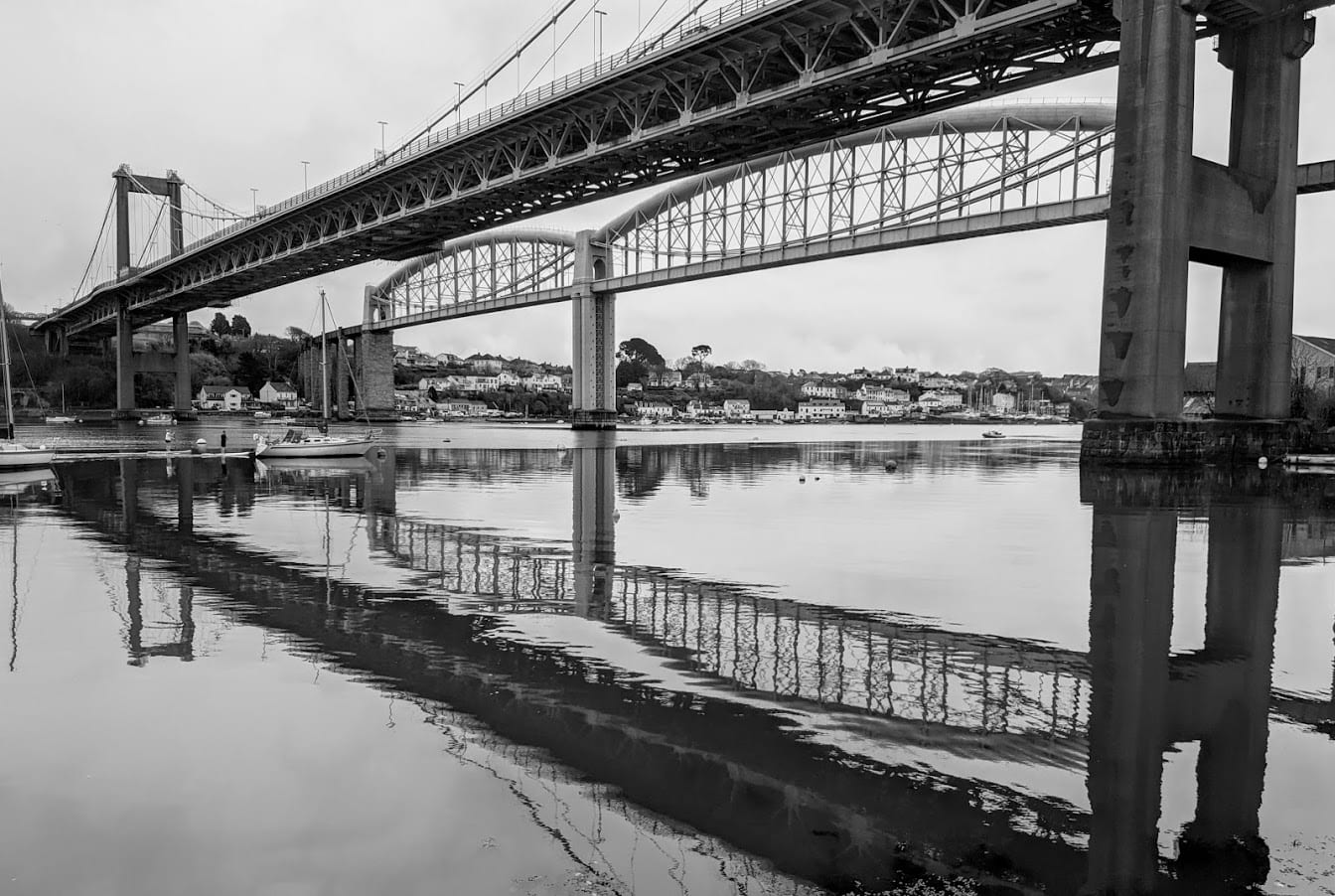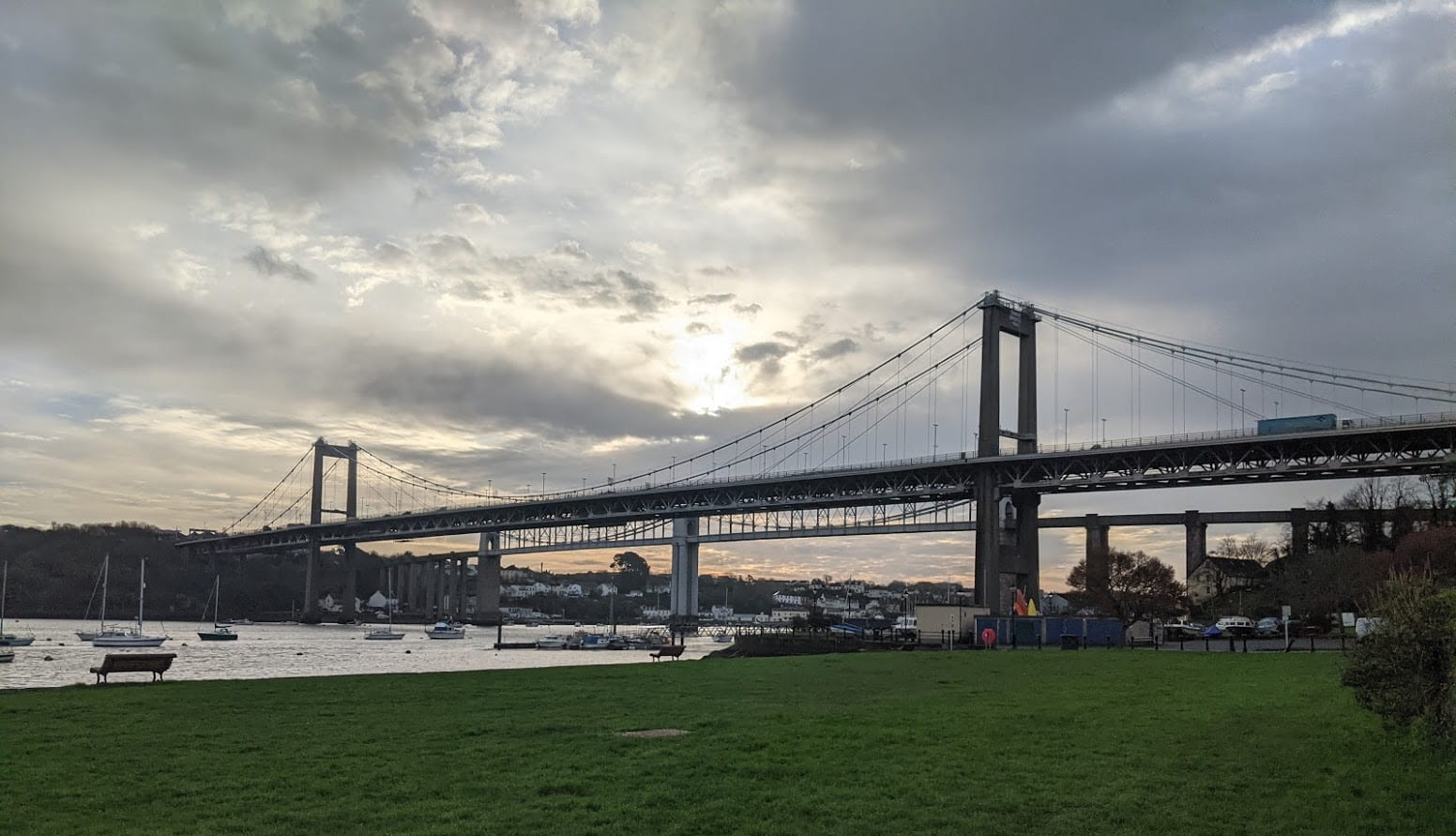
Last weekend, local news reported another suicide on the Tamar Bridge.
This highlighted an issue which, as a resident of Saltash myself, we rarely ever hear about. In my experience of living in the town for 23 years; bridge suicides are something people rarely discuss openly or with very much factual knowledge. So, I decided to investigate a little further to see if I could uncover whether it really is a problem for our town.
As usual, my first stop for fact finding was the internet, and I soon realised that barely any information is easily accessible to the public showing statistics for bridge deaths, and there is only an occasional, usually brief, article in the Plymouth Herald. It’s an issue which has never been brought into clear focus and I wondered why and whether there actually is a solution?
There are thousands of other bridges around the United Kingdom – Bristol’s Clifton Suspension is one which had attention drawn to it when barriers were raised in 1998 to reduce its suicide numbers. Figures reported in the 5 years since the alterations were made, state the annual suicides/deaths occurring have halved from those of the previous 5 years. So, you could conclude that deciding to raise the barriers, for the residents of Bristol and their surrounding area, is a success story (although we are talking about numbers of single figures every year).
However, the main difference in terms of raising the barriers on the Clifton Suspension, is that they are inverted towards the bridge, whereas for the Tamar this would not be a feasible option. As both cantilever lanes need to be used regularly for road traffic when maintenance repair work is carried out, high-sided vehicles such as lorries and buses would not be able to pass if the barrier was inverted. Yet if raised parapets were added to the existing ones facing outwards, it could prove fatal for potential suicide victims, as it would prevent them from being able to climb back down. Various reports highlight this as something which is common in suicide attempts – most people who intend to jump from the bridge, change their minds once they’ve scaled the barriers, and then climb back to safety.

I spoke with Saltash Town Councillor Sam Tamlin who told me that in his 4 years of service the issue has been brought up many times. There have been several meetings in recent years, attended by local Cornwall and Devon Council and bridge owners the Tamar Bridge/Torpoint Ferry Joint Committee, to discuss the possibility of raising the existing barriers which currently stand at 1.5m, to increase them to 2.6m which is the height deemed to be high enough to prevent attempts to climb over.
Minutes of a Saltash Council meeting on 14th June 2019 show estimates to raise the existing parapets would cost £6m if the entire length was heightened, and £2m if just the edges were raised – this being the area most suicide attempts are made from. It is also the area which mostly affects those residents who live beneath and who are left to deal with the horror and aftermath of witnessing a suicide, having a body land in their gardens, hearing the unmistakeable thud, and the after-effects it can leave them with personally, and crucially their children.
Several factors need to be taken into consideration, it’s far from being a straightforward thing to fix. Sam told me “Firstly, and most significantly, any alterations to the existing bridge need to adhere to current government guidance, which places vast restrictions on what can and can’t be done. Their view is that drawing attention to anything related to suicides will potentially highlight the problem, as it may trigger people to use the bridge as a suicide option by planting the idea into their heads. It’s for this reason that no memorial flowers can be laid, and there is no emergency phone situated directly on the bridge”.
Sam shared links to the minutes of local council meetings. The most recent meeting to discuss this issue was held on 14/6/19 and can be found on this link:
https://democracy.cornwall.gov.uk/ieListDocuments.aspx?CId=620&MID=9078#AI81018
The most relevant section of these minutes state :-
“With regard to statistics relating to suicides: –
– Fewer than 1-2% of successful attempts that had taken place in Plymouth and Cornwall had been at the Bridge.
– Over the last 15 years, there had been 15 completed suicides at the Bridge. Most years there had been 1 death each year. Some years there had been 2 deaths in the year, and in some years, none.
This compared to typically 25 a year in Plymouth and 85 a year in Cornwall.
– Whilst it was acknowledged that barriers at a height of 2.6m would provide a more visual deterrent, it was impossible to say how successful in prevention this would be, particularly as there was such limited evidence available to draw on.
– Most people who suicided planned it carefully – it was not an immediate act – and most people did so at home.
What made the most difference overall was the support network provided to those contemplating suicide, such as counselling and crisis services.
Sam also told me “There are 24/7 cameras located on the bridge which are constantly monitored by staff in the Tamar Bridge Office on the Plymouth side, who are specifically trained to deal with suicide attempts. They also have equipment with software installed which monitors and detects when anyone on the bridge is standing still for any length of time. Staff regularly walk the entire length of the bridge to ensure that no debris is left which may be thrown over – as anti-social behaviour is also another problem which they must also contend with”.

Despite a petition being started by Saltash resident Helen Harrington back in 2016, and amassing over 16,000 signatures, the council’s minutes of their last meeting concluded that raising the parapets would still not be a clear-cut solution to the problem, and even if all parties agreed, spending £6m of revenue from the bridge and ferry tolls would not guarantee saving any lives. If the average yearly death toll is just 1 person, the council’s aim suggests more focus towards dealing with the subject of mental health as a priority, rather than raising the parapets. The next Council meeting which will discuss this subject is due to be held on 12th March 2021.
I also spoke with Helen who has been campaigning since 2012 to have changes made to the bridge barriers to prevent any more unnecessary suicides. She has given two West County news television interviews and spoken on Plymouth local Radio. “Noone wants to talk about it” she told me. And despite her petition gaining over 16,000 signatures to date, she was told by the council that signatures need to be from residents in the Plymouth and Cornwall area to warrant any recognition. So, the fact that she has had people showing their support as far afield as America and Australia makes no difference. At this point, and after putting in so much effort, Helen now feels she’s “run out of steam” and despite doing extensive research, uncovering alarming statistics from Devon and Cornwall Police relating to possible ‘suicide related calls’, Helen is at a loss to know what to do next. Her feelings of frustration have also been exacerbated by the negative social media responses she encountered during her years of campaigning.
During her involvement with the petition, Helen spoke with Andy Rance from Live Wire Youth Project, based at the Waterside underneath the bridge. They are a local youth project offering not only their music facilities and guidance to young people of the area, but also support specifically aimed at the mental health issues faced by the youths who attend. Andy regularly goes into the Saltash secondary school (during non-Covid times) and has drop-in sessions there for students to speak to him whenever they feel they need to offload and share their feelings. He also offered Helen his support by volunteering the Live Wire premises for meetings to discuss the bridge issue and suggested that images showing supportive quotes could be projected onto the side of the Live Wire building, with the aim of them being visible from the bridge itself.

There is also a project planned by Plymouth’s Fotonow later this year, if approved, to replace the plaques which line the walking lane of the bridge. Hopefully, it will be permitted for these to contain some guiding thoughts or words of comfort, for anyone stepping onto the bridge who may be contemplating taking their own lives, possibly suggesting they stop, breathe, take a minute and ask for help. But these will, undoubtedly, have to pass local council guidelines first. When I asked Helen what she’d like to see on these plaques, she said “some really colourful artwork created by our local school children would be lovely, with a water or sea theme – something beautiful and cheerful and, most importantly, positive”.
With so many factors to consider, from all sides of this ongoing issue, it seems there may never be any simple way to eradicate the problem of suicides on the bridge. The council’s figures show that on average there is one death a year resulting from people jumping over. However, one death is one too many is the widely held belief of most people, Helen included. Yet, sadly, there does not seem to be any one–answer–fits–all solution to prevent those whose despair leads them to consider taking their own life on the Tamar Bridge.

This was a really good read Lucy, such a sad topic which should be covered a lot more.